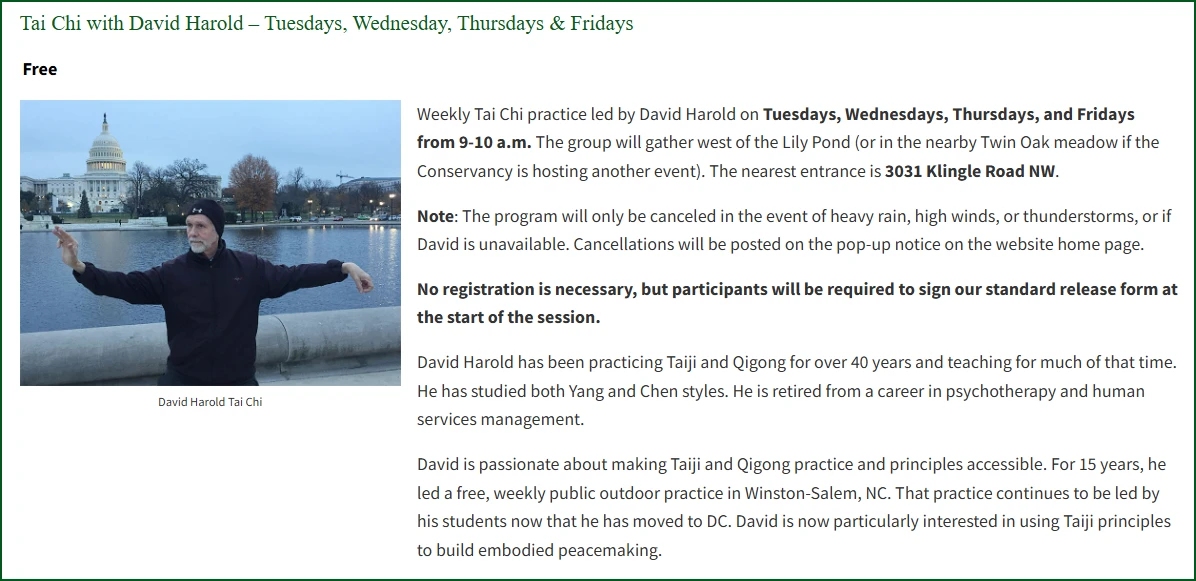“Country estate gets new life as oasis of learning in D.C.”


|
|
Washington Post Staff Writer
Monday, November 23, 2009
More than 70 fifth-graders from the District’s Oyster-Adams Bilingual School left their classrooms on a recent afternoon and trekked more than a mile north for an outdoor science lesson in the city’s newest patch of public forest: the Tregaron Estate in Cleveland Park.
“This is a pretty place,” said 10-year-old Ella Feldman, sitting under a dogwood sapling and looking out over a tree-studded, leaf-littered slope. “And I bet you in a year, it’ll be super pretty, since they’re fixing it up.”
Tregaron is a 20-acre piece of Washington history, a rare turn-of-the-20th-century country estate that is mostly intact. An official D.C. landmark since 1979, it was for decades a battleground between private owners who proposed a series of plans to build homes and neighbors who fought to preserve the landscape.
In 2006, the parties reached a settlement that prohibits most development. Now, after nearly four years of digging out trails from beneath tangles of dead trees and poison ivy, the wooded parcel and its winding paths are open to school groups and the public. The estate can be accessed near Klingle and Woodley roads.
“It’s kind of a secret garden in the middle of the city,” said Bonnie LePard, executive director of the Tregaron Conservancy, a nonprofit group that owns 13 of the estate’s acres and is heading up efforts to restore them. “But I don’t want it to be secret. I would love people to enjoy it.”
The Oyster-Adams students, the first from a D.C. public school to visit Tregaron, practiced identifying trees for a science unit on adaptation. They took notes on native and nonnative plants and made leaf and bark rubbings.
They had questions for LePard: Can we climb the trees? Do deer live here? If you’re not going to charge an entrance fee, what are you going to do if your supporters stop donating money?
“You should come to my board meeting,” LePard said, laughing.
The home at Tregaron was commissioned by Cleveland industrialist James Parmelee in 1912 and built by Charles Adam Platt, a noted architect who designed the Freer Gallery of Art and other public buildings. Joseph Davies, ambassador to the Soviet Union, bought the Georgian Revival home in 1940 and lived there until he died in 1958. Now owned by the private Washington International School, the building remains in good condition.
“It was a beautifully designed wilderness garden, with streams and bridges and paths, and native plants and dappled sunshine,” said Thaisa Way, an assistant professor of landscape architecture at the University of Washington who has studied and written about the property.
In the past four years, the Tregaron Conservancy, which relies on donations from people, foundations and the Washington International School, has spent about $1 million on restoration efforts.
Engaging in what LePard calls “forensic gardening,” workers have uncovered paths and unearthed stone steps and bridges that had been covered with dirt, silt and leaves. They dug out a lily pond that held more muck than water.
“Every time we started getting into the woods, we kept discovering more and more features that oftentimes didn’t show up on any of the plans,” said Steve Callcott, the District’s deputy state historic preservation officer, who has volunteered at Tregaron since helping to iron out the land-use settlement.
The conservancy has planted dozens of trees and 2,000 daffodil bulbs, and it wants to raise money to replant the grounds using Shipman’s original plans.
“I’ve been here in D.C. forever,” said Veronica Herrera, a parent who helped chaperon the Oyster-Adams field trip and had not heard of Tregaron. “You don’t know what’s in your back yard.”



